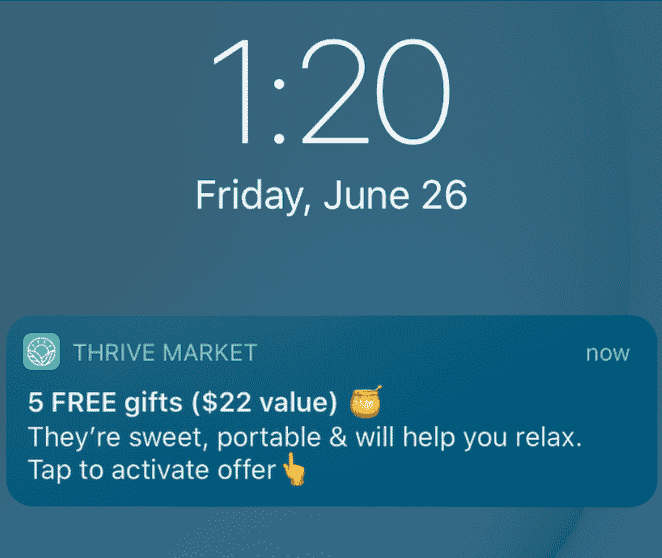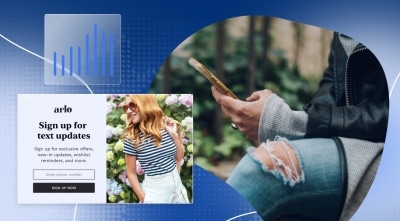Business
SMS Personalization: The Key to Unlocking Your Business Potential
October 18, 2021

For better or worse, most of us are never far from our mobile devices. Which is why SMS personalization has become so crucial to unlocking your business potential.
Mobile devices have become a main hub of communication — after all, they make your emails, SMS texts, push notifications, website promotions, and even the rare phone call never more than a finger tap away. In fact, most of us are so used to SMS text messaging as a quick and easy means of communication that a recent study by Google found most mobile users expect a response to a text message in 20 minutes or less.
While email is a tried-and-true strategy and a primary direct marketing channel for most brands, audiences are increasingly open to or even expecting businesses to be available via text message for everything from customer service queries to package tracking updates.
So, if you’re looking to make your mobile experience irresistible to every shopper, here are a few reasons to consider adding personalized SMS marketing to your mobile and email messaging.
Brands ignoring SMS personalization are missing out
Shoppers are increasingly relying on mobile at every stage of their buyer journey, from browsing websites to making purchases to tracking those orders and reaching out to businesses with questions and concerns. And as those customers turn to mobile for every step of their shopping experience, it’s highly possible your email audience is already receiving SMS messages — from other brands.
According to a recent study by Attentive Mobile, more than 56% of consumers use mobile as their primary device for online shopping. Additionally, respondents say they’re using SMS messaging to communicate with brands more than ever before. Over half (55.9%) say that they currently receive text messages from businesses, while almost 25% say that they would be open to even more text message communication from the right brand.
As consumers grow increasingly more comfortable both with shopping via mobile device and receiving SMS messaging from brands, businesses that incorporate text messaging into their mobile strategy, along with creating a plan for personalized email communication, will win big with customers who expect brands to reach out via mobile in multiple ways.
SMS personalization and email strategy should work together from the start
Make SMS a part of your onboarding process. Any great email strategy includes a robust onboarding process, and if you’re already using onboarding to better understand the kind of content that most appeals to your customer, make sure you ask about SMS messaging.
Query new subscribers to gauge interest in text messaging and ask for mobile numbers. If your customer opts in, make sure they receive messaging not just about current orders, but also seasonal promotions and special offers.
Include tap-to-text for easier access to customer support. Email can be an excellent way to make sure customers can quickly access your customer support center. Add a tap-to-text feature to your emails that will instantly open an SMS conversation with a customer service agent to solve problems like missed deliveries, service rescheduling, or address other order concerns and errors. Tap-to-text is also an excellent way to help customers easily enroll in your SMS program.
Increase engagement with customers who have stopped opening email. If you’re noticing a dropoff in email opens, using SMS personalization to remind subscribers what they love about your brand is an excellent way to add a bit more personalization to your mobile marketing strategy.

For example, when Thrive Market wanted to improve communication with its audience, the brand began sending a push notification to subscribers who hadn’t opened their emails, followed by an SMS for customers who still hadn’t engaged. Using a combination of SMS, push notifications, and email is a unique, personal way to reach audiences who might be experiencing a bit of inbox fatigue. And — as Thrive Market can attest — dramatically improve results too.
Focus on SMS personalization (and avoid common pitfalls)
Of course, adopting an SMS personalization strategy requires the same attention to marketing and tactics for engagement as email. However, SMS marketing also comes with its own set of rules. Here are some tips for creating engaging SMS messages, along with some common mistakes to avoid.
Do call customers by name. No one likes to feel they’ve received a message by mistake. Make sure to address your customer by name when sending an SMS message.
Don’t forget about personalization. If you’re sending a text message, make sure you’re sending an offer, reminder, or a question that matters. Use a customer’s order history, abandoned cart, or content preferences to send special offers, alerts, or information about items they’ve browsed rather than making customers feel as if they’re receiving a mass message.
Do ask for feedback. As user reviews and ratings become critical for businesses both looking to improve service and boost SEO rankings, asking customers to rate their experiences via text message is a great way to provide a simple avenue for satisfied customers to tell you (and the world) exactly what they loved about their experience.
The State of Brand Loyalty in the U.S. in 2023
Related



